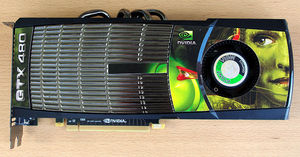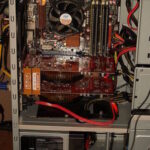If you’ve read my previous article on overclocking your CPU then you should know how to successfully overclock your CPU, but did you know you can also overclock your video card? It’s true, and it can provide some really impressive benefits, especially if you’re a gamer.
In this guide I’ll show to how to safely and successfully overclock your video card.
Identifying your video card
Before you start overclocking you’ll want to figure out what video card you’re using. This will help in the long run with troubleshooting any issues you might run into, and help figure out the overclocking limits on your video card along with its safe temperatures.
What is really important is to figure out what brand your video card is. Is it a Nvidia or AMD/ATI video card? This will make a big difference down the road.
A quick way to identify your video card is to download and run ‘GPU-Z’. GPU-Z is a program that will tell you everything you need to know about your video card.
Overclocking software
Unlike overclocking your CPU where you have to go through the BIOS, to overclock your video card you simply need to use a overclocking program.
There are many different overclocking programs, but I personally recommend MSI Afterburner, as it has a wide range of overclocking options and is also one of the most precise.
Along with your overclocking software, you may also want to use GPU-Z to monitor temperatures and to make sure your overclock is correct.
Begin overclocking
Once you’ve installed the overclocking software, you can begin using it to overclock your video card. Once starting up the program you should see some sliders for ‘Core Clock’, ‘Memory Clock’, ‘Fan Speed’ and ‘Core Voltage’.
Since you’re just starting, you’ll want to avoid adjusting the core voltage right now. Focus on the core clock, memory clock and fan speed for the time being.
You’ll want to raise the core and memory clocks only slightly, especially if this is your first time overclocking. You can also look online to see what some successful overclocks are for your current video card and set yours to that, but be sure these clocks are completely stable and are done with the stock cooler.
You may leave the fan speed on auto if you wish, but you can also set it to 100% if you want it to spin as fast as possible. Keeping the fan speed on 100% indefinitely will lower the life of your fan, but it should still last you several years regardless.
Stress-testing
Every time you overclock your video card you’ll want to do a stress-test. This will ensure that your overclock is completely stable.
For stress-testing you’ll want to use a combination of stress-test or benchmarking software and playing a video game that will stress your video card.
3D Mark is a good program to use for both benchmarking and stress-testing, along with the benchmark that comes with MSI Afterburner. Any graphics intensive video game will do, just make sure it’s one you can play for at least an hour.
While you’re stress-testing, keep on eye on your video card monitor (Either the one in your overclocking program, or GPU-Z) and make sure the temperatures don’t get too hot for your video card.
If your video card is getting too hot or your computer is freezing up then you may want to look into 3rd-party coolers for it, or lower your clocks.
Rinse and repeat
Once you’ve successfully completed the previous steps you may go back and increase the clocks again. Keep doing this until you’ve reached your desired clocks or you’re at the safe limit for your video card.






